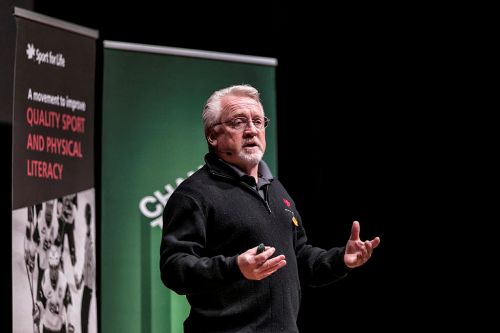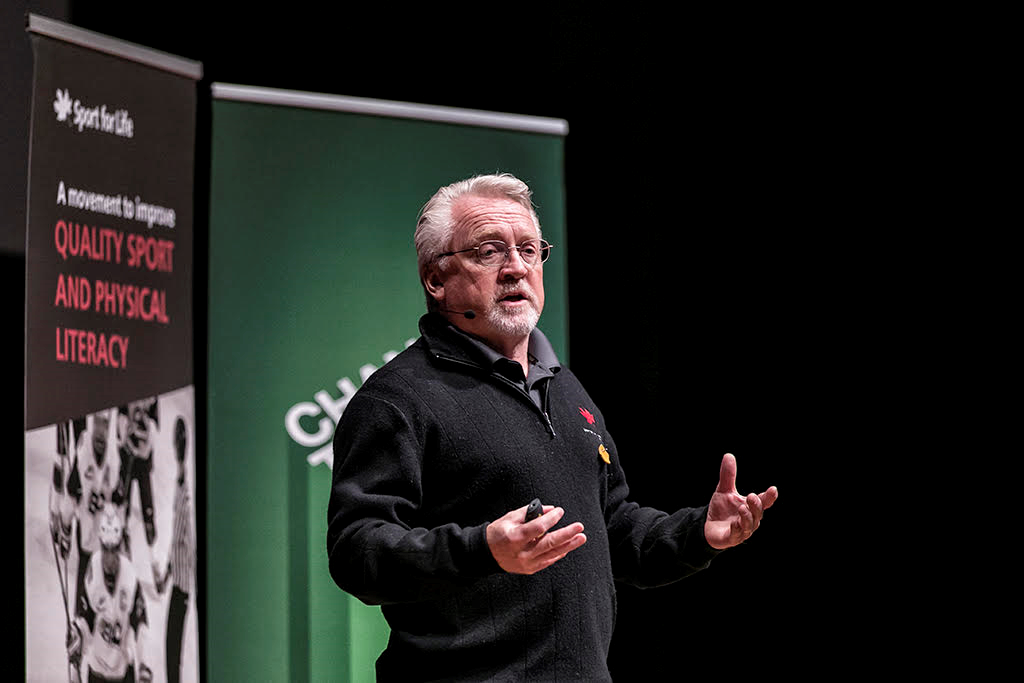Richard Way champions rectangle approach to long-term development in sport and physical activity
 It’s a simple story of two models: the pyramid versus the rectangle.
It’s a simple story of two models: the pyramid versus the rectangle.
Sport programs have traditionally operated under a pyramid model that involved taking a whole population of kids at the community level then progressively cutting them until only the few remained. The end goal was to identify a few that could represent the nation and bring medal glory. This model is based on exclusion, while the rectangle is based on inclusion — meaning that athletes and participants that would normally be cut are instead encouraged to continue learning.
“In the 1960s there were a lot of triangles and pyramids. As we try to modernize sport thinking, Sport for Life introduced the long-term development rectangle,” CEO Richard Way shared in a number of keynote addresses that have taken him all over the world.
“The pyramid only looks at a moment in a person’s lifetime. It’s based around a single sport, as opposed to the rectangle that looks at all the activities a person will encounter over the course of their lifespan. It’s built around a lifetime of different experiences.”
As far as Way is concerned, inclusion is non-negotiable and any quality sport program should be aiming to foster love of the sport and fun in as wide a swath of the population as possible. Rather than focusing on cutting people from the team, sport organizations should be embracing anyone who would like to engage with that activity, and focus on helping them develop their physical literacy in a way that will benefit their health long-term. This is certainly a challenge to traditional thinking.
“When we design programming based on the rectangle, organizations honour participation, no matter the level. Wherever they are, participants are included and honoured, which makes sense because there are millions to spend on getting everyone active! You still get the gold medal, but the gold medal is only part of the journey. And even when you’ve won that, your life and athletic career isn’t over.”
To reach as many people as possible, Way would like to see this rectangle approach incorporated into the school system. If schools take on the pyramid approach, that would mean searching for talented “gems” and kicking out everyone else. The rectangle, meanwhile, would “have them involved for their lifelong journey in physical literacy.”
“I’ve walked into gyms in Canada where in Grade 9 there’s over 50 girls trying out for one sport, but there’s only one team. So there’s 40 girls who want the healthy social connection of playing sport that are being told they’re not good enough,” he said.
“It is such short term thinking as 15 to 20 years later they’re mothers with this negative experience and do they really want their kids to go through the same thing?”
The rectangle approach acknowledges that some of the girls may have not yet gone through their growth spurt, and could become high-performing athletes. This is contrasted with the pyramid’s short term thinking, which would see those same girls deselected early in the process.
“We need to keep as many athletes as possible for as long as possible in quality sport programs,” he said.
The key according to Way is to make room for idiosyncratic pathways, acknowledging that every athlete is different and will experience sport and physical activity in different ways. Essential is to start with a multisport approach, that will be a base to participate in the sport they enjoy which may include seeking physical activity outside the sport system entirely, while others may dedicate themselves to a solitary pursuit. The rectangle makes room for all of this.
“Back in the 1950s in Canada, we wanted to build everything separate. So you’d have the school over here, and then over there would be the swimming pool and the rec centre. So the school is busy during the day and empty at night while the rec centre is the opposite. Nowadays we’re seeing designers put them all together.”
When building a rectangle model, Way believes you must plan based on ability rather than age. This factors in each individual’s unique needs. And to truly put the rectangle into practice, it needs to look at the sport and physical activity ecosystem as a whole, rather than its individual siloes.
The overall goal is to create a healthy society, but that doesn’t mean athletic achievements will fall by the wayside. He’s received push-back from people operating within the high performance world, who often feel the approach he’s championing doesn’t actually apply to them or their athletes. But now after 15 years of advancing the rectangle framework there are numerous examples of sports who are winning globally while bucking the trend of diminishing participation. With a rectangle approach, sport organizations can contribute to a healthy society while still earning precious medals.
“Gold medals are a byproduct of a healthy society.”

